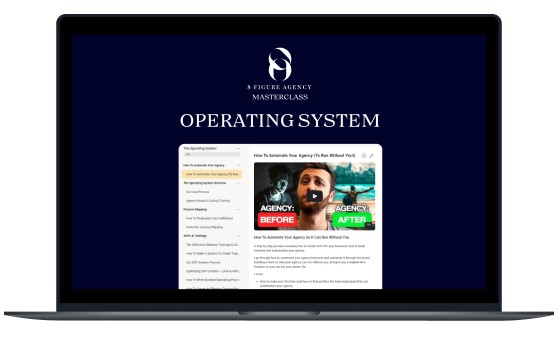If you run a company of any size, you must have a process already in place for some element of your business.
However, if you’re like most companies, this existing process is probably manual and requires too much time and manual effort on the part of employees to be effective.
A process here is a set of activities undertaken to achieve a goal. The word process is used in many different contexts, but in the business world, it usually refers to the steps necessary to deliver a product (or a service) in an organized and efficient way. While creating efficient processes seems like a simple task, it can be surprisingly difficult to accomplish.
What makes it challenging is this: if an enterprise is large enough to have several different departments doing similar tasks (for example, marketing and sales), each department needs to have its own policies or procedures for performing well.
And, although the processes may work well for a specific department, it can be problematic if they conflict with other departments––and can lead to complex execution and productivity challenges for enterprises.
Also, time-consuming, muddled, and inefficient business processes frequently result in increased expenses. They also lead to low morale, and dissatisfied or frustrated clients––all of which can pose a challenge for organisations to remain competitive and ahead of the curve.
So, how do you ensure that it’s all done right?
The answer is: Business Process Management.
However, before we delve deep into it, let us look at the first-ever known example of effective business process improvement.
The Ford Model T
In the early 20th Century, Ford had a typical car manufacturing system. Every worker in the factory performed all the tasks in the manufacturing process, with no coordination between the tasks. In fact, the entire car was built by a single worker who moved from one workstation to the next, making the entire process extremely time-consuming.
Then Henry Ford introduced the moving assembly line process, which allowed workers to specialize in a single task and move along a conveyor belt to the next worker who would then perform their specialized task.
This new process allowed Ford to dramatically increase car production while reducing costs. It was so revolutionary at the time that other automakers were forced to adopt the same process or risk going out of business. That assembly line process also became the model for modern manufacturing, and is still used today.
What Exactly is Business Process Management?
Business Process Management in simple terms is the analysis of processes, their design, and optimization. But, it has many other definitions.
From a technical perspective, BPM is the automation of business processes through technology. It’s the use of technology to automate manual or repetitive tasks that take place in a company, thus freeing up staff to perform other work. For example, an organization might use BPM software to automate the process of creating purchase orders.
The question is, why is it so necessary?
Well, your processes—which were most likely created when you had fewer team members or before you used certain tools—may have become obsolete, inefficient, or ineffective over time.
Business Process Management steps such as process mapping, process standardization, and data analysis are tried-and-true ways to analyze and improve these processes to scale operations.
No wonder it is growing so rapidly, especially in the enterprise ecosystem.
According to a recent report, the worldwide BPM market is anticipated to increase from $8.76 billion in 2020 to $14.44 billion by 2025.
The Many Benefits of Business Process Management
A report from 2020 suggests that, approximately 62% of businesses have up to 25% of their businesses operations model, with just 2 percent having all processes modeled — Signavio
However, businesses that follow good BPM practices do better than the others in various ways.
BPM enables organizations to avoid delays and errors caused by manual processes as people make mistakes or forget to perform their tasks. These issues often result in lost customers, frustrated employees, and tarnished reputations for businesses.
On the other hand, well-designed BPM strategies reduce costs and boost productivity by helping an organization automate many of its manual tasks. In fact, it is seen as a major cost-reduction step by as many as 46% businesses.
Additionally, BPM can help to improve customer service by speeding up response times and improving accuracy.
BPM also enables a company to better plan for the future by forecasting and analyzing data. This information can then be used to make informed decisions about:
- Where the company should focus its efforts
- Which products or services it should offer
- How it should allocate resources, and more
Some other areas where it benefits the organization are:
- Revenue growth
- Compliance
- Reduced cycle times
- Increased customer satisfaction
- Improved employee retention
- Risk management
- Elimination of non-value-added tasks
- Competitive advantages
- Innovation agility
3 Types of Business Process Management
BPM is all about improving business processes and optimizing them. It’s what helps an organization to be more efficient and productive. And makes sure the processes are aligned with the goals of the company. The three types of BPM which are:
#1: Operational BPM
Operational BPM focuses on automating existing business processes pertaining to operations. It is often used to automate manual and repetitive tasks. This helps in creating a more streamlined and efficient process that can improve efficiency and cut costs while eliminating the potential for human error.
A digital marketing agency, for example, might use software for operational BPM to streamline the process of updating a client’s website with new content. In doing so, it can save time and resources that would have been wasted while employees manually change code on a CMS platform.
Digital marketing agencies also use operational BPM systems for contract management, employee onboarding, and invoicing clients.
#2: Management BPM
Management BPM focuses on improving and optimizing an organization’s ongoing management related business processes. Instead of automating existing processes, A company might use Management BPM to improve its sales forecasting process by creating a more accurate forecast using data analytics and modeling capabilities.
Another good example could be ––a Customer Relationship Management (CRM) system could be used to aggregate data from social media channels to help customer service representatives identify and resolve customer issues before they escalate.
#3: Support BPM
Support BPM is focused on improving the underlying technology and support infrastructure needed to support an organization’s business processes. This may include automating manual tasks, developing or upgrading software applications, or even creating new system integrations for other departments.
For instance, an organization providing SEO or Facebook marketing services may use Support BPM to create a process for monitoring the rankings and key performance indicators of keywords for its clients.
Common Business Process Management Myths
Now, to be able to get the most out of your BPM efforts and learn a few of its core aspects, it’s critical to first debunk some of the myths. Because, let’s face it –– despite BPM being so popular in the business environment, there are many people who still have several misconceptions and questions about what it means and how to implement it.
Myth #1: BPM is only for large enterprises
BPM is not just for large businesses – it can be used by any organization, regardless of size. In fact, small businesses may benefit more from BPM because they are typically more agile and able to deal with change more efficiently than large enterprises.
Myth #2: BPM is just for one department
BPM doesn’t only help an organization’s operations – it enables organizations of all types and of any size to improve efficiency, productivity, agility, and responsiveness in all their departments.
For an instant, the process automation of simple tasks within marketing can allow marketers to focus on growing the business.
Myth #3: BPM is too technical for non-techies
BPM doesn’t require any programming knowledge or IT skills – it can be implemented by people with varying levels of skills and expertise.
Organizations that implement Management BPM (where no code is required) will typically hire an external vendor or tool to do the implementation.
Myth #4: BPM is just for repetitive tasks
BPM can be used to automate and improve non-mundane tasks as well. It can greatly help even those processes that don’t seem like they could ever be automated – such as product design and development, and customer service.
Myth #5: BPM is only for process improvement
BPM is not just for process improvement but can also be used for process innovation. When done well, a process improvement usually results in a more efficient or effective procedure.
Process Innovation is broader in scope and necessitates the use of analysis, but it also demands a great deal of creativity. Process innovation in turn can help organizations stay competitive and agile in today’s rapidly changing business environment.
Business Process Management Implementation
Implementing business process management starts with identifying processes for improvement or innovation. This is where you convert all your preparation into execution. Here’s how you go about it:
1. Assess
The first step in implementing BPM is to assess your current business processes. You should basically have a bird’s-eye view of your organization’s operations and get an idea of where you want to go with BPM.
You can determine which tools and technologies are currently in use and how they can be integrated into the new BPM system.
Let’s say, you want to improve your sales processes. You can involve the team and ask questions like:
- What are the bottlenecks in the current sales processes?
- How do the current sales tools work?
- What are the areas that need improvement?
- What are our best sales practices?
- Do you have a process for helping your new clients or customers take advantage of your services?
- Are your sales processes ready to handle your sales goals and priorities?
When you answer these questions as the first step, you will have a better idea of your strengths and weaknesses which will help you lay the foundation of great business process management.
2. Model
After the initial assessment, you begin with business process modeling. It is the process of choosing and creating the right model for your BPM purposes. There are different types of business process models that can be used; some of them are:
- Flowchart model
- Workflow technique model
- Data flow diagrams
- Object-oriented models
- Gantt charts
- UML diagrams
- Role integration diagrams
Although the above models are quite common, the most popular ones are the flowchart and workflow technique models.
These would allow you to identify and document the steps involved in a process, the interactions between the steps, and the information or data that is being exchanged quite effectively.
3. Implement
After the model is finalized, it’s time for the actual implementation. This is where you will put into use all of the tools and technologies that you have identified in step one and two. You will need to set up your environment, install the software, and configure it to your needs. Be sure to test everything before going live.
Testing should be done with a small group of people to identify and correct any issues, before the new system is used by the employees. The team should test the:
- Software
- Process
- New workflows
- Communication channels
Depending upon your requirement, you may even need to integrate with other applications, to get the most value from your BPM implementation.
4. Manage and Monitor
Now that your business process management is implemented, you need to make sure that it is running smoothly and effectively. BPM implementations should be monitored continuously to ensure that the system is performing as expected.
Consider whether the process is progressing as planned, any obstacles that prevent an optimized system from functioning, and whether they can be fixed. And then fix the issues on the go.
5. Optimize
At this stage, you can use the data that you have collected in step 4 to optimize the process. You can tweak it as needed and measure the results to see if it is effective.
As part of your business process optimization, you can also:
- Identify and correct bottlenecks in the newly implemented process
- Better manage your resources, budgets, and human capital
The more you optimize the better your business process will be working for you. However, don’t go overboard with optimization as it may affect overall productivity.
6. Automate
After you have implemented new business processes and are regularly optimizing, the next step is to automate them. Automation helps speed up processes, improve accuracy, and reduce human error.
But unfortunately, 25% of decision makers believe that lack of vision is a serious challenge in doing automation. However, with effective tools and strategies, it could be done quite effectively.
There are different types of BPM tools that can be used for automation across different stages and departments of an organization; some of them are:
- Business process modeling software
- Business process execution software
- Document management software
- Enterprise resource planning (ERP) software
- Human resources management software
- Supply chain management software
- Customer relationship management (CRM) software
How to Choose the Right Business Process Management Software
Choosing the ideal business process management software is not an easy task. It is a decision that should be made after careful consideration of the needs of the business. There are various factors that need to be considered when making this decision, such as:
- The size of the company
- The type of company
- The number of employees
- The complexity of the processes
- The software requirements
- The budget
After considering all these factors, the next step is to shortlist the software that meets the needs of the business.
A new age business process management tool should have some, if not all, of these features:
- Artificial Intelligence: Machine Learning and Natural Language Processing to save time.
- No requirement of coding: A tool in which coding is not required or is absolutely minimum for modeling business processes and running automated tasks, thus the learning curve is low and so is the initial investment.
- Mobile: An application that can be accessed on mobile devices anywhere at any time will benefit both the business and employees.
- Connectivity: A business process management tool that integrates with other software and comes with an out-of-the-box data warehouse is a must for companies working on multiple projects and departments.
- Cloud-based: A cloud-based tool ensures that the software can be accessed from any device with an Internet connection and no installation is required.
- Customizable: The software should be customizable according to the needs of the business so that it can handle different complexities and processes.
- Reporting and Analytical Tools: The software should come with robust reporting and analytical tools to help identify and track process bottlenecks and areas of improvement.
- Scalability: The software should be able to handle the increasing business needs and scale up according to the number of users/processes.
- Security: A high level of security is essential for businesses as they handle sensitive data.
- Support: The software should come with 24/7 support to ensure that any issue or query is addressed at the earliest.
Once the decision has been made to invest in a business process management tool, the next step is to obviously start using it.
Conclusion
To conclude, BPM is all about making the workplace more efficient, so that employees are able to work better and faster. It can be used by any sized company for any kind of process running within the organization.
So whether you run a large organization or a small startup, having BPM in place is a must if you want it to run productively and smoothly.






